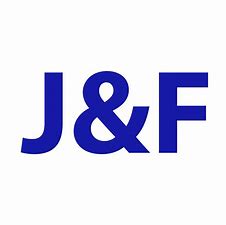Leaders of companies that stand out in 27 sectors intend to increase investments in 2023
09/05/2022

Fiscal responsibility and an environment that provides security to private-sector investments are the basis of the model that Brazil must pursue in the next four years, according to the executives that run the most efficient companies in the country.
For this recipe to work, tax and administrative reforms were defended as priorities by the businesspeople that gathered on Monday during the “Valor 1000” award event, which highlights the companies with the best performance in 27 sectors.
Frederic Kachar, managing director of print media and radio at Grupo Globo, highlighted the renewal of winners in the categories: of the 27 winners, 12 are different from the previous year. “This shows the dynamism and how relevant companies emerge in Brazil every year,” he said. Mr. Kachar emphasized that the winning companies show “concern in developing the entire country with operations in all regions.”
“We are celebrating much more than good financial results. We celebrate the values that companies have embraced and must continue to pursue as well. Efficiency, capacity to invest and innovate, environmental protection, employee and community development, for example,” said Maria Fernanda Delmas, Valor’s editorial director.
Although they see 2023 as a still challenging year, due to the need to keep fighting inflation and the still adverse external scenario, most leading companies in each sector intend to increase or maintain the volume of investments compared to 2022. The executives also emphasize the importance of ensuring social advances in the country.
Alexandre Birman, CEO of Arezzo&Co, defends the respect for the spending cap and says that “just as businesspeople need to efficiently manage the generation, allocation, and distribution of their resources, the government must do the same. It is necessary to fight ‘huge money leaks’ so that the funds are directed to the priorities.” Among these, he lists food, education, and health.
Copel CEO Daniel Slaviero agrees that the first priority is the goal of balancing public accounts, which, in his view, will create the necessary conditions for the resumption of sustainable growth, based on the confidence of the private sector. But he points out that the “government will need to establish, together with society, the size of the indispensable social safety net for the neediest population.”
This is also one concern of B3 CEO Gilson Finkelsztain. He stressed the importance of a favorable environment for the strengthening of Brazilian companies so that they contribute to the generation of employment and income. However, he cited urgent issues like “bridging the educational gap, which widened during the pandemic, and having a growth structure that contributes to reducing inequalities in the country.”
/i.s3.glbimg.com/v1/AUTH_37554604729d4b2f9f3eb9ad8a691345/internal_photos/bs/2022/m/L/6W3k4cRhidfVvog8Ptvw/dsc-4274.jpg)
Jeane Tsuitsui — Foto: Silvia Costanti/Valor
The balance between fiscal austerity and inclusive public policies can come from increased public-private partnerships and investment in technologies that raise the efficiency of services provided to the population. For this reason, Jeane Tsutsui, CEO of Grupo Fleury, advocated an advance in health access policies, with incentives and partnerships that “bring quality care and primary care solutions to low-income populations,” such as telemedicine and digital devices.
In addition to fiscal austerity, Thiago Muramatsu, CEO of Syn Prop & Tech, lists as necessary fronts for action “the adjustment of interest rates, inflation control, and unemployment reduction.” Randon CEO Sérgio Carvalho said it is necessary to move forward with structural overhauls, an infrastructure plan and the efficiency of public management. “These are fundamental pillars to boost the country’s economy, with the potential to improve the business environment and stimulate Brazilian companies to grow, generate wealth and sustainably develop their communities.”
Reflecting on his area of expertise, Eduardo Parente, CEO of the Yduqs group, points out that in basic education it is key to improve “training and continuous development of teachers” in addition to “ways to raise the quality and mitigate regional inequalities of the public education system, which is very comprehensive but needs to deliver more quality.” As for higher education, expanding access of lower-income people to universities should be a priority, he said.
Whirlpool Chairman João Carlos Brega said that “there is no silver bullet,” but considers that the “resumption of the country’s growth and the construction of a safe, stable and attractive institutional environment for investments, capable of providing dignity, well-being and prosperity to Brazilians” depend on an agenda that includes tax and administrative overhauls, and expansion of investments in infrastructure. But he recalled that “society has a very important role to play” in pressing presidential candidates and in presenting new agendas during the electoral campaign.
A tax overhaul designed by executives was considered by WEG CEO Harry Schmelzer Jr. as the “number 1 priority.” He said that it “should include tax breaks for payrolls, investments, and exports, avoiding the accumulation of tax credits and also paying attention to the simplification and reduction of the bureaucracy of the processes.” The rationalization of the tax system also appears as one of the priorities of TIM CEO Alberto Griselli, along with the greater integration of Brazilian companies into international production chains and a “great effort to modernize the Brazilian educational system.” A similar vision is shared by Localiza CEO Bruno Lasansky, for whom investment in education and entrepreneurship is fundamental: “These are fronts with high potential to drive social transformation.”
For Milton Maluhy Filho, CEO of Itaú Unibanco, “controlling inflation and ending the cycle of high interest rates are two major short-term priorities,” since a more robust resumption of growth depends on them, with job and income generation. The continuity of the structural overhauls, especially the administrative and tax ones, is his third priority. Marcelo Arantes, the chief people, marketing and press relations officer at Braskem, listed as priorities maintaining the industry’s competitiveness and legal security, and encouraging job generation.
Suzano CEO Walter Schalka sees a weak world economy in 2023, possibly heading towards recession, which will demand attention in business management. “Although we work with products that present greater inelasticity in consumption, it is necessary to pay attention to the economy to be prepared,” he said, considering that a “fiscal contraction seems inevitable” in the country. World inflation and the cycle of high interest rates in rich countries and its effects on Brazil are also on CSN’s radar. However, CEO Benjamin Steinbruch points out that Brazil “brought forward the rise in interest rates,” which forces down inflation, and, with fiscal control, it will be possible to “put the economy back on track, getting Brazil out of the crisis.”
Among others, Viveo CEO Leonardo Byrro has an optimistic point of view. He evaluates that inflation may converge to something more feasible and point to a reduction in interest rates at the end of the year or in the first quarter of 2023, which unlocks growth and consumption and helps to resume spending.
This scenario gives confidence for an increase in investments. Therefore, even considering the impact of the recent rise in interest rates on fundraising, Airton Gallinari, CEO of Coamo, says that “investments should be at least 50% higher than the R$588 million in the two years 2021/2022.” São Martinho has a similar concern. “For future growth and investments, we will have to be more diligent in capital allocation. This is a discipline we implemented in 2010 and never deviated from it,” CEO Fabio Venturelli said.
*By Valor — São Paulo
Source: Valor International

/i.s3.glbimg.com/v1/AUTH_37554604729d4b2f9f3eb9ad8a691345/internal_photos/bs/2022/6/f/AYProaQ9iFzu279wT9aA/18739180033-f931763a2c-o.jpg)
/i.s3.glbimg.com/v1/AUTH_37554604729d4b2f9f3eb9ad8a691345/internal_photos/bs/2022/H/A/wglH1EQgAaxuSdZNpCrw/glauco-20humai-20l-20presidente-20da-20abrasce-201-20-281-29.jpeg)

/i.s3.glbimg.com/v1/AUTH_37554604729d4b2f9f3eb9ad8a691345/internal_photos/bs/2022/2/s/15HAFYTmAnSE5dAdQTHQ/05emp-100-sendi-b3-img01.jpg)
/i.s3.glbimg.com/v1/AUTH_37554604729d4b2f9f3eb9ad8a691345/internal_photos/bs/2022/y/P/OiucziTeqhwEPAUj3dmQ/05bra-300-constroi-a2-img01.jpg)
/i.s3.glbimg.com/v1/AUTH_37554604729d4b2f9f3eb9ad8a691345/internal_photos/bs/2022/e/J/gySuw9SsOJsPtDIq69dQ/05fin-100-ipos-c1-img01.jpg)
/i.s3.glbimg.com/v1/AUTH_37554604729d4b2f9f3eb9ad8a691345/internal_photos/bs/2022/2/u/PfuROfQU6jSUYYrOpxxg/gerdau-20gustavo-20werneck-202.jpg)
